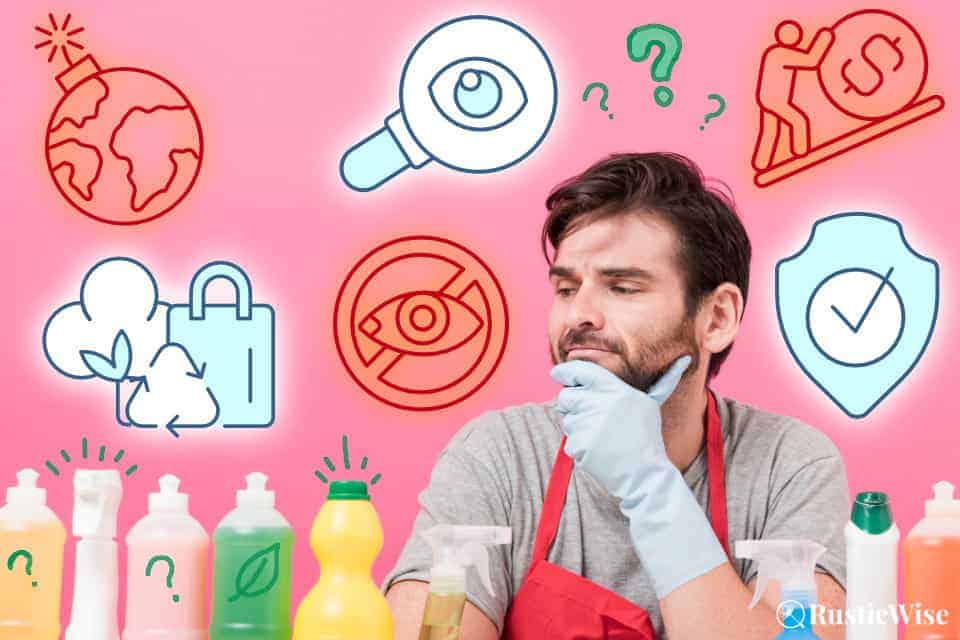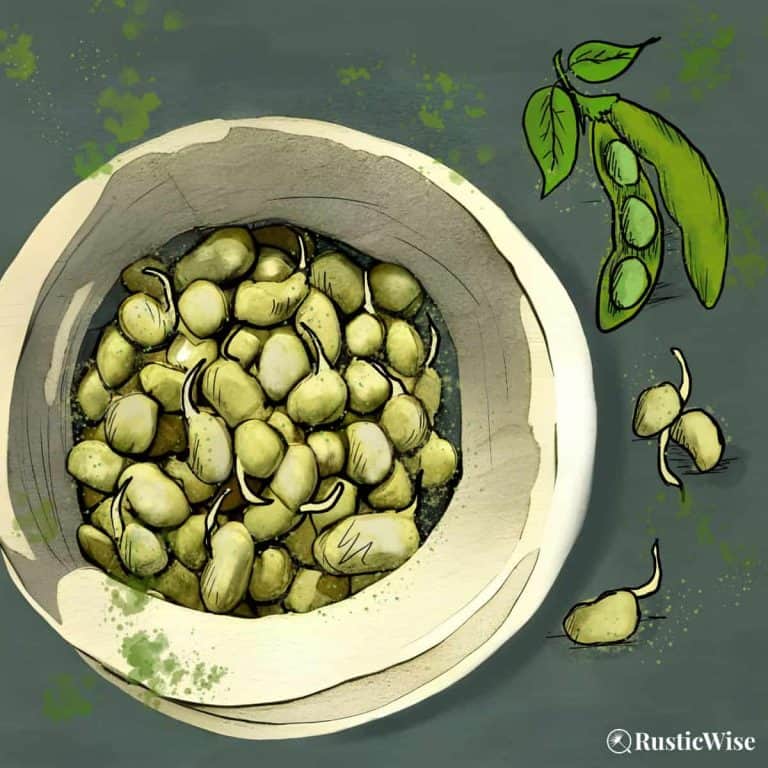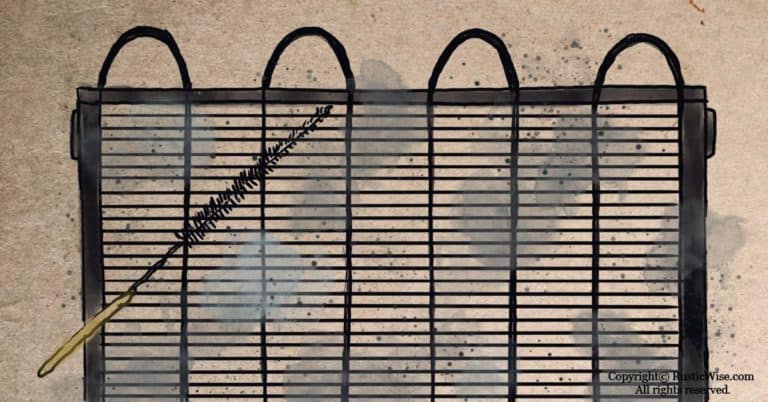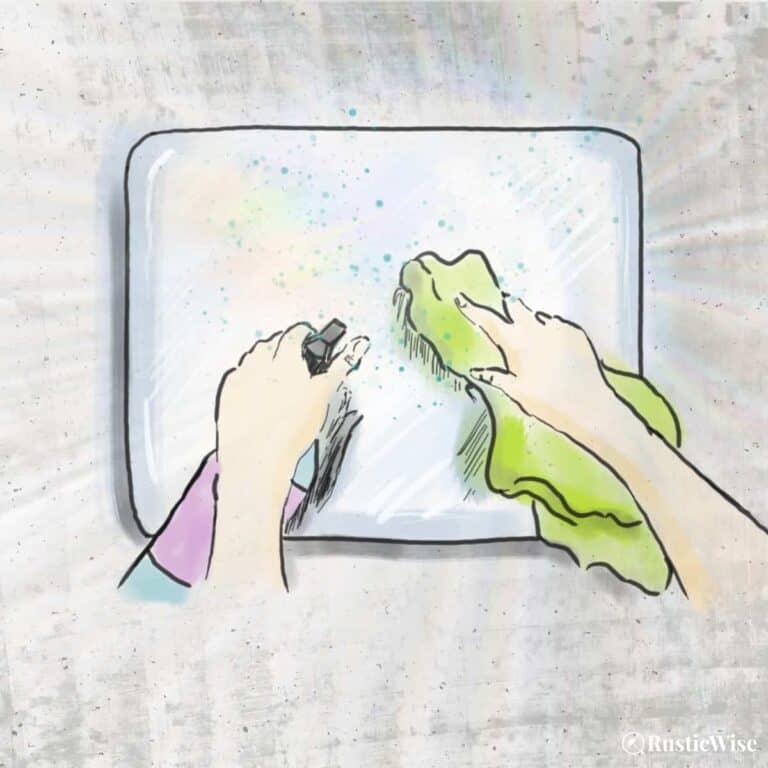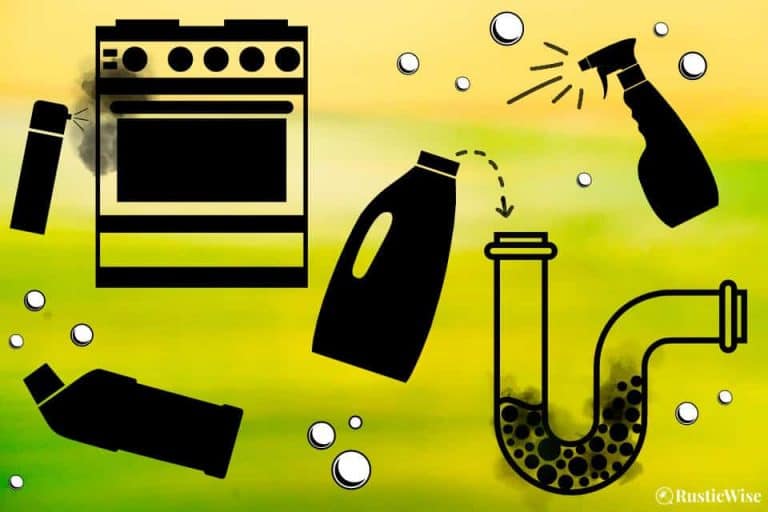What Is Greenwashing? 4 Fishy Household Cleaning Labels To Beware Of
In the world of eco-conscious products, not everything is as it appears. What is greenwashing, exactly? Simply put, the term greenwashing refers to the act of promoting one’s company, products, or policies as being more environmentally-friendly than they really are. It’s deception to sway customers into buying products that are supposedly “greener.”
When it comes to choosing more sustainable products, consumers have an arduous task. It’s no easy feat to sift through green claims made by companies, some of which are true, semi-true, or plain outright lies.
While greenwashing occurs in virtually every industry, we’re going to focus mainly on commercial household cleaning products. The green global green cleaning products market was worth US $3.9 billion in 2019 and is expected to grow to US $11.6 billion by 2029.¹
There’s big money in this industry which explains the abundance of green marketing jargon. Let’s explore the world of eco-friendly cleaners and how you can spot potentially misleading terms.
What is greenwashing, exactly?
Greenwashing is also called green sheen. The Cambridge Dictionary defines greenwashing as “behaviour or activities that make people believe that a company is doing more to protect the environment than it really is.”
The term was coined in 1986 by environmentalist Jay Westerveld. While visiting Fiji, he observed that a large hotel chain was promoting the idea of reusing towels to protect the ocean and coral reefs.²
Westerveld noticed that while advocating for less waste by reusing towels, the hotel was also expanding its construction of more buildings—two conflicting messages. The hotel was using the act of using less water to wash towels as a diversion from the fact that it was actually harming the reefs by expanding the hotel.²
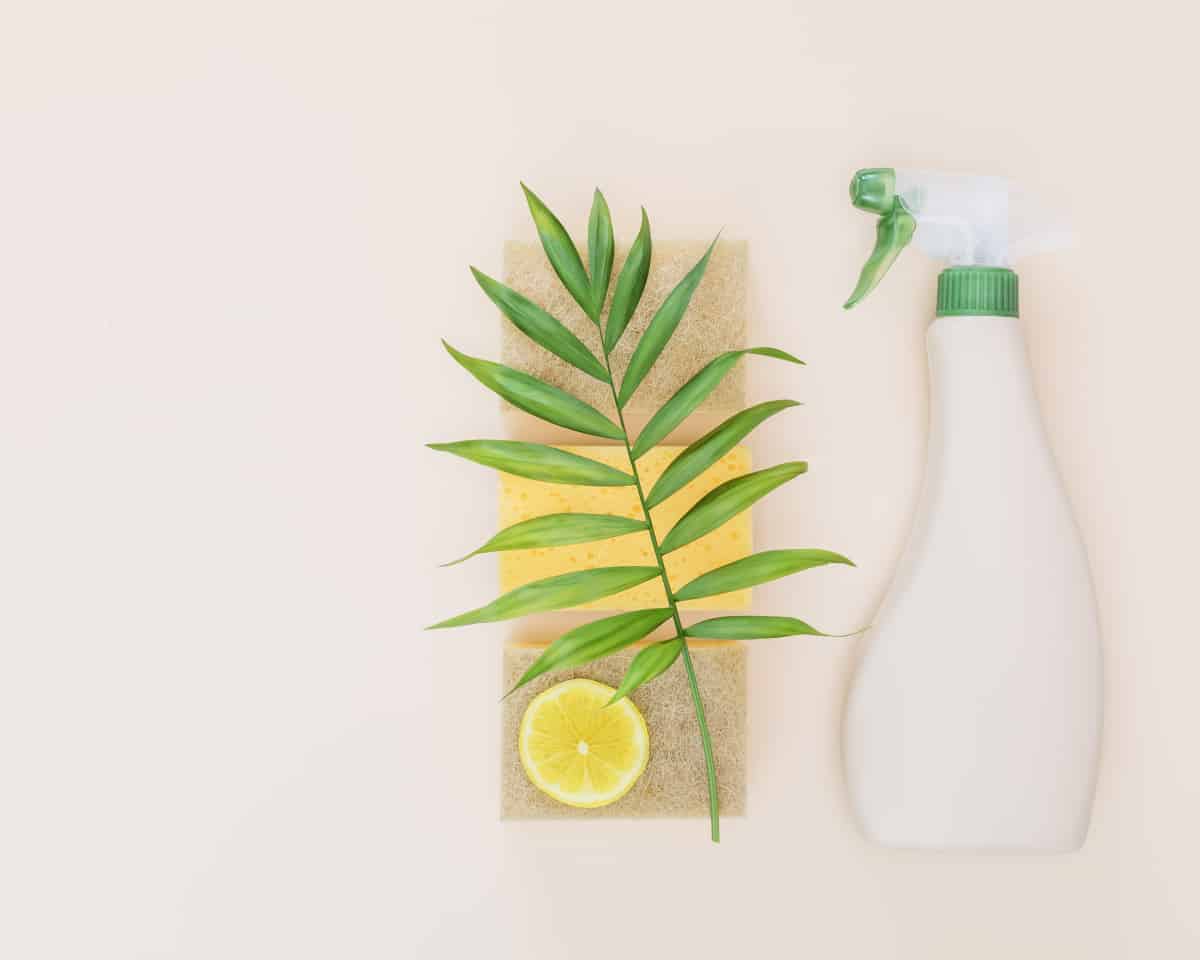
The 7 sins of greenwashing and examples of each
In 2007, Terra Choice (an organization that helps grow sustainable companies), released its first Sins of Greenwashing report. It outlines seven ways companies commit the sin of greenwashing.³
- Sin of the hidden trade-off: The act of using a “narrow set of attributes” without drawing attention to more pressing eco issues. For example, paper produced from a sustainably harvested forest is fine, but there are other areas of concern, such as pollution created via manufacturing and efficient energy use.
- Sin of no proof: Green claims that are hard to verify, or don’t provide supporting evidence. For example, many paper manufacturers claim X-percent of its products are produced with post-consumer recycled materials, but provide no evidence.
- Sin of vagueness: The use of wishy-washy jargon that is loosely defined. For example, what exactly does “all-natural” really mean?
- Sin of irrelevance: A claim that may be true, but immaterial. For example, products that claim to be “CFC-free” are irrelevant as they are legally banned, anyway.
- Sin of lesser of two evils: Green claims that may be true, but gloss over the impacts of the product category as a whole. For example, compostable one-use cleaning wipes are supposedly better than non-compostable ones. But, isn’t it better to simply clean with reusable cloths?
- Sin of fibbing: Outright lies. Most companies don’t have the audacity to make up complete lies, so this sin is the least committed.
- Sin of worshipping false labels: Attractive labels with possibly misleading words or images that give the impression of a certification or third-party endorsement when there is none. For example, a logo with a leaf claiming to be eco-friendly.
A few examples of greenwashing
Greenwashing occurs in virtually all industries as companies aim to beef up corporate social responsibility.
One of the most famous greenwashing incidents was a scandal committed by Volkswagon, now known as “Dieselgate.” In 2015, the U.S. Environmental Protection Agency (EPA) discovered that they equipped car models from the year 2009 to 2016 with software designed to cheat emissions tests.⁴
The EPA found VW violated the Clean Air Act. This not only tarnished VW’s reputation, but fraudulently mislead customers into believing they were driving “greener” vehicles. In reality, they were emitting greater amounts of nitrogen oxides (NOx)—serious pollutants that harm air quality.⁴
Other examples of greenwashing are less scandalous, but still harmful.
Do you shop at local farmers markets to shop local (to reduce your carbon footprint), and support local growers? If so, you might be disturbed by this next story.
The CBC discovered that some vendors at farmers markets weren’t actually selling homegrown produce. They were hawking false claims about growing farm-fresh produce when they were selling produce purchased at wholesalers at a premium price.⁵
Reporters followed a farmer in question and saw his staff removing produce stickers before selling them at farmers markets.⁵
These are just a few of the attention-grabbing events that occurred in the past.
However, plenty of seemingly innocent or innocuous greenwashing occurs unnoticed by the average consumer.
Much of this occurs in household cleaning products where it’s difficult to decode an ingredients label. Choosing green products for cleaning not only improves indoor air quality, but also improves our overall health, as we’ll examine below.
The impact of greenwashing
Despite best efforts, some greenwashing is not intentional. At best, murky environmental marketing claims are misleading; at worst, they’re unethical.
Forrester Research discovered that people’s mindsets about the environment took a positive turn in 2020 (year of climate change disasters and the pandemic).⁶
They found that most people want to do the right thing as a conscious consumer:
- 68 percent of consumers plan to boost efforts to identify socially responsible brands;
- 61 percent choose energy-efficient labels; and
- 47 percent frequently buy organic products.
As eco-conscious consumers, most of us want to spend our hard-earned dollars on a green company who takes real action to lessen its carbon footprint and engage in sustainable practices.
In today’s society, one in which we value genuine and material action taken by companies, phonies are weeded out. False green marketing claims not only lead us to choose products that really aren’t that great for the earth, but also divert our dollars and attention away from a more deserving, truly responsible company.
4 Greenwashing cleaning terms to beware of
The world of green advertising is a noisy place. Finding truly environmentally friendly products can be a challenge.
Beware of “green cleaning” terms and environmental claims that don’t really mean anything.⁷
1. The term “biodegradable”
Anything biodegradable sounds great, right? One would assume that a biodegradable cleaning product is one that breaks down safely, posing little to no harm to the environment in a reasonable amount of time.
The problem is that anybody can claim a product is “biodegradable” as there really are no regulations about using this term.
A company should provide reasonable scientific evidence that its product breaks down into natural elements in a reasonable timeframe. BUT, there is no definition of what constitutes a reasonable time. Is it 1 year? A decade?
While products that use this term falsely might be slapped with a lawsuit by the Federal Trade Comission, there’s no regulatory board in charge of overseeing this.⁷
Tip: Look for cleaning products that disclose all ingredients on their label. Their website might provide some more information regarding their testing efforts to back up this claim.
2. The term “non-toxic”
At its most basic, a non-toxic substance is one that won’t kill you if accidentally ingested, or cause long-term bodily harm, such as sprouting a third eyeball.
Conversely, the term “toxic” is applied to products that are potentially deadly. Toxic products fall under the Federal Hazardous Substance’s Act, or meet the Consumer Product Safety Commission’s definition of toxic.⁷
Technically, any products that aren’t toxic can be labelled non-toxic.
Since this is such a broad term, many companies use the term “non-toxic” freely as it isn’t regulated.
Tip: Look for products that are plant-based. Watch out for products making this claim with petroleum-based ingredients, or with little supporting information.
3. The “phosphate-free” claim
This term is commonly applied to detergents. The term “phosphates” is a broad umbrella term that encompasses many phosphorous-based chemicals.
You’ll find phosphates in many detergents as a water-softener that prevents soap scum. They also help detergents work better by preventing dirt from resettling onto fabrics.
The problem with phosphates lies in their harm to waterways and aquatic life. These chemicals throw the delicate water ecosystem out of whack. They are huge oxygen-suckers which deplete the oxygen supply for other organisms and wildlife. They cause algae blooms, and the death of aquatic animals and coral reefs.
Just because a product doesn’t contain any chemicals that fall under the phosphates family, doesn’t mean it’s inherently better for the environment.
When phosphates are taken out, they’re often replaced with other petroleum-based chemicals that are difficult to break down.
Tip: Look for these replacement phosphate chemicals on the ingredients label. These aren’t exactly good for you, or the environment: polycarboxylates, ethylenediamine tetraacetic acid (EDTA), alkyl phenoxy polyethoxy ethanol, nonylphenol ethoxylate.⁷
4. The “SLS-free” label
Sodium lauryl sulfate (commonly called SLS) has developed a bad rap.
It’s a common ingredient used in detergents, shampoos, and even toothpaste. As a synthetic surfactant, SLS provides cleaning power and helps boost lather. Unfortunately, many people experience skin irritation or dryness after using products with SLS.
Many labels boast they are SLS-free which makes them seem milder or gentler on both skin and the environment. But this can be misleading.
To replace SLS in a formula, manufacturers often replace it with other petro chemicals, including other sulfates.
Tip: Check out the ingredient label for other sulfates (a broad category of chemicals) that can also include sodium laureth sulfate (SLES) and ammonium lauryl sulfate (ALS).
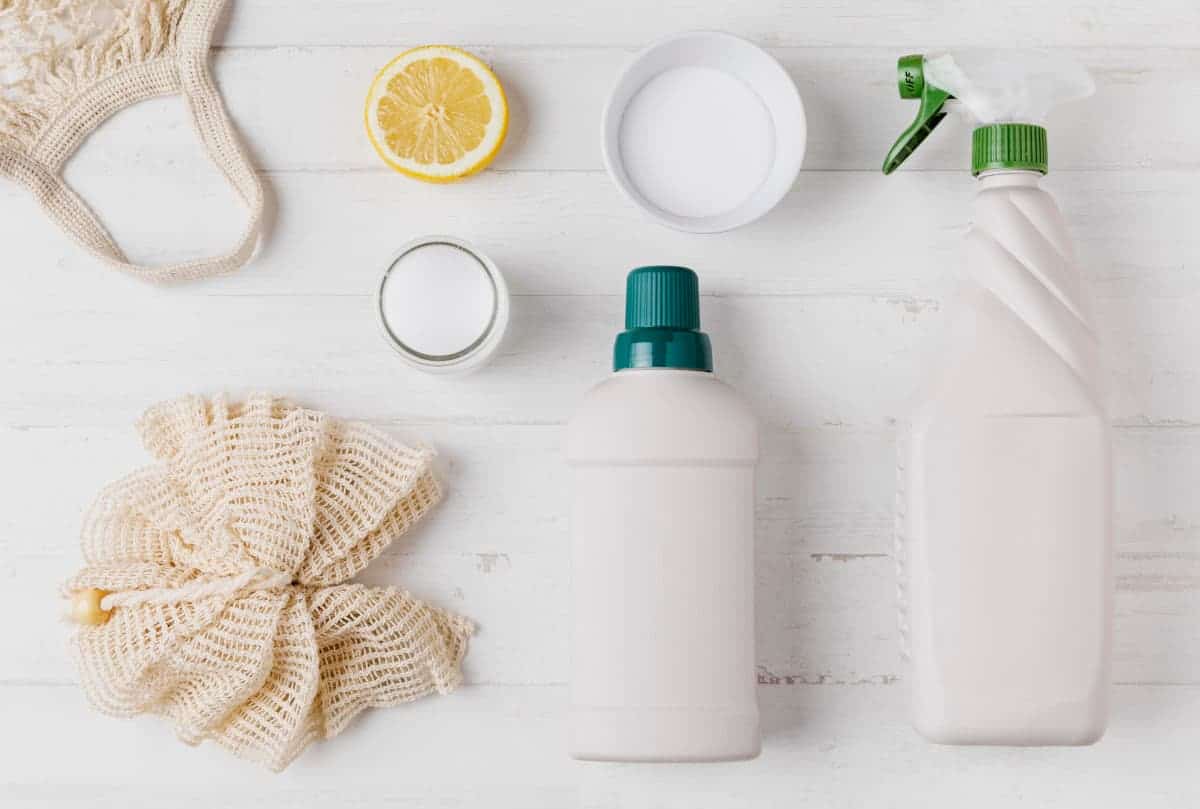
Why choose greener cleaning products
Choosing a greener product not only reduces your environmental impact, it has a direct impact on your health.
Many strong cleaning products adversely affect the quality of your air at home. Various chemicals introduce volatile organic compounds (VOCs) into your home. VOCs slowly release chemicals into your air over time.
Did you know that the average American spends about 90 percent of their time indoors? According to the EPA, the concentration of pollutants indoors is between 2 and 5 times higher than concentrations of pollutants outdoors.⁸
Poor indoor air quality affects those most vulnerable—young children, the elderly, or those with respiratory or cardiovascular diseases, such as asthma.⁸
And the quality of air inside our homes is actually worsening due to modern trends and technology. We now use more synthetic building materials, and our energy-efficient homes actually reduces fresh air exchange. Many people also use more chemical-based personal care products, cleaners, and pesticides.⁸
The EPA has found that poor indoor air quality is linked to the following health problems:⁸
- Increased headaches, light-headedness, and fatigue.
- Increased skin, eyes, nose, and throat irritants.
- Higher cases of heart and respiratory diseases, and cancer.
Good “green” labels to spot
Luckily there are some ways to spot, or look up companies or brands that take environmental responsibility seriously.
- EPA’s Safer Choice Label: The EPA has created a database where you can look up greener cleaning products by category. Brands that meet the EPA’s standards can use the Safer Choice logo.
- Green Seal: This shows that a product has been deemed eco-friendly throughout its lifecycle. Look for the Green Seal label.
- Green America Certification: A Green America certified business is one that practices sustainable practices for both the earth and its employees.
- Not tested on animals: You’ll recognize this label with its “bunny” logo. Not harming animals for the sake of product testing is something we can all get behind. Brands bearing this label undergo vigorous testing standards and audits every 3 years.
Back to basics: natural cleaners to stock up on
Most of us rely on the convenience of commercial cleaning products. But, with a few natural cleaning ingredients (most of which you’ll already have at home), you can keep your home clean, minus all the harsh chemicals.
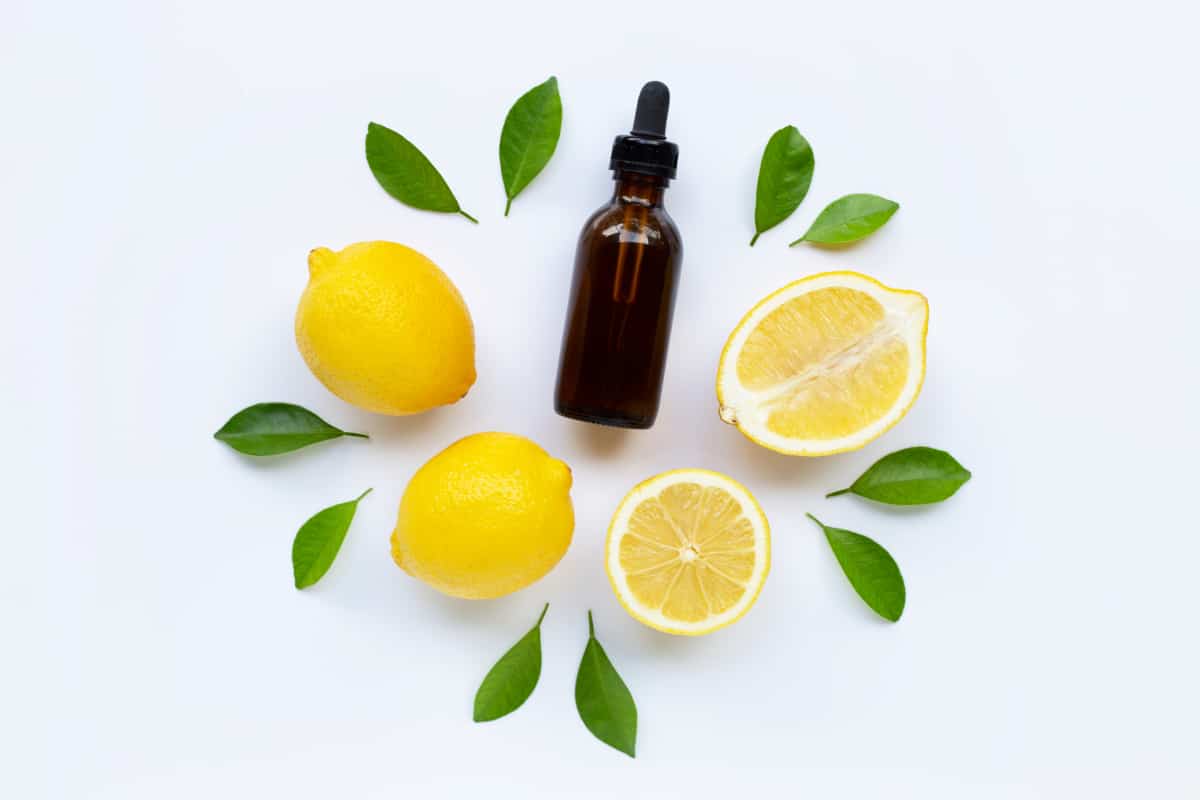
- Baking soda: A natural mild abrasive alkali that’s acts as gentle scouring powder. It also works wonders for removing odors and stains.
- Castile soap: A natural and non-toxic plant-based soap that’s a cleaning powerhouse. Use it for washing dishes, as an all-purpose cleaner, and more.
- Citric acid or lemon juice: A bit of citric acid refreshes, deodorizes, and gently removes soils and grease.
- Hydrogen peroxide: Gentler than chlorine bleach, hydrogen peroxide works to effectively remove stains on carpets and clothing.
- White vinegar: A green cleaning staple that relies on natural acetic acid to cut through grease, remove mineral deposits, and gently disinfect.
- Essential oils: A few popular essential oils used for cleaning include lavender essential oil, lemon essential oil, orange essential oil, and tea tree oil.
Would you like more timeless tips via email?
Fun tips to help you live an independent, self-sustaining lifestyle. Opt-out at any time.


References
- Global Newswire, Global Green Cleaning Products Market Thriving Worldwide- Trends, Analysis and Forecast 2019-2029, https://www.globenewswire.com/news-release/2020/06/23/2052153/0/en/Global-Green-Cleaning-Products-Market-Thriving-Worldwide-Trends-Analysis-and-Forecast-2019-2029-PMI.html. Accessed May 2022.
- Watson, Bruce (April 2017). “The troubling evolution of corporate greenwashing,” Chain Reaction Magazine. (https://search.informit.org/doi/pdf/10.3316/ielapa.766428450523476). Accessed May 2022.
- TerraChoice, The Sins of Greenwashing Home and Family Edition 2010. http://faculty.wwu.edu/dunnc3/rprnts.TheSinsofGreenwashing2010.pdf. Accessed May 2022.
- U.S. Environmental Protection Agency (EPA), Learn About Volkswagen Violations, https://www.epa.gov/vw/learn-about-volkswagen-violations. Accessed May 2022.
- Denne, Luke and Foxcroft Tiffany (30 November 2017). “‘People are being duped’: CBC exposes homegrown lies at farmers markets,” CBC. Accessed May 2022.
- Forbes, Empowered Consumers Call For Sustainability Transformation, https://www.forbes.com/sites/forrester/2021/01/21/empowered-consumers-call-for-sustainability-transformation/. Accessed May 2022.
- Loux, Renée (2008). Easy green living. Rodale Inc. ISBN 978-1-59486-792-7.
- U.S. Environmental Protection Agency (EPA), Indoor Air Quality, https://www.epa.gov/report-environment/indoor-air-quality. Accessed May 2022.

Author: Theresa Tesolin
Theresa is co-founder of RusticWise. She helps people unleash their inner DIY spirit by encouraging them to get dirty and make or grow something from scratch.

